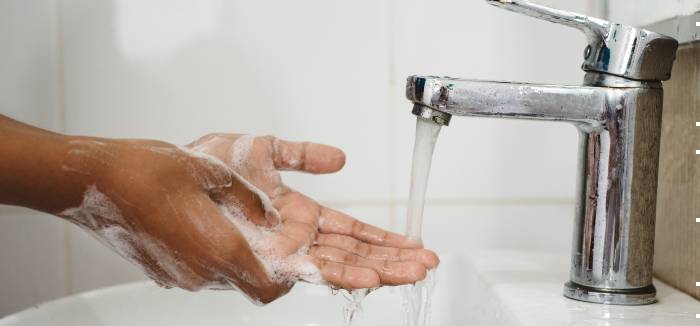Soap Up—It’s National Handwashing Awareness Week
National Handwashing Awareness Week 2022 highlights the first and most effective weapon that every individual can use to prevent the spread of infectious diseases--handwashing.
Handwashing is the most effective tool to protect against infectious diseases.
(Adobe Stock)

This year, National Handwashing Awareness Week is December 5-11, 2022. It is observed during the first full week in December to educate individuals on the proper technique for handwashing and the importance of maintaining hand hygiene. It is celebrated in addition to Global Handwashing Day which occurs on October 15, 2022. According to the Centers for Disease Control and Prevention (CDC), handwashing is one of the most effective methods to prevent the spread of germs. Proper hand hygiene adherence is critical in health care settings and is one of the simplest and most cost-effective elements of infection prevention but remains unacceptably low.
Infection Control Today® spoke to Garik Nicholson, MPH, CIC, the chair of the Hand Hygiene Committee at Moffitt Cancer Center in Tampa, Florida, and he said, “Handwashing remains one of the most effective ways to prevent the spread of infections. Here at Moffitt, we provide all departments with near-real-time data on how they are performing. This transparency shows each department how their role fits into the overall goal of maintaining compliance while reducing the risk of spreading infections.”
Studies show that health care workers practice hand hygiene less than half of the time they should. How can you encourage health care workers to perform hand hygiene? To promote handwashing practices, it is important to understand the science behind it and remind staff that their unique microbiome can act opportunistically, especially in hosts rendered susceptible. This acknowledgment is what first led to the discovery that unclean hands were contributing to the spread of puerperal fever in Europe in the mid-1800s which was killing postpartum women. Reinforce with your staff that the skin is colonized with 2 types of microbes—resident flora and transient flora. Resident flora or colonizing flora consists of microorganisms that continuously live in or on our bodies. An example of resident flora is Staphylococcus epidermidis. Transient flora is microbes that are temporarily harbored on the superficial surface of the body and primarily spread via direct skin contact or indirect contact with touching objects or surfaces such as Pseudomonas aeruginosa. Transient flora is most frequently associated with hospital-acquired infections. With handwashing, transient flora on the hands of healthcare workers can be reduced.
Ever facility must have an adequate supply of hand hygiene products, sinks, gloves, dispensers, and disposable towels available. Combating noncompliance begins first and foremost by removing all barriers to access. Hand hygiene products should be readily available throughout a facility and conveniently placed to promote handwashing such as before and after entering a patient’s room, before eating, after using the restroom, in procedure rooms, in operating rooms, etc. Hand hygiene education should be placed throughout health care facilities for staff and patients to read and should be changed periodically to prevent object desensitization that can occur from seeing the same signs posted in the same spots.
Health care facilities should also have a comprehensive hand hygiene policy to establish the indications and procedures for the performance of hand hygiene. This policy should be reviewed periodically to ensure it remains up to date with current recommendations. Facilities can appoint a hand hygiene committee to review this policy and enhance all handwashing efforts.
Hand hygiene compliance monitoring should also be maintained via an electronic hand hygiene system or observation system. Train staff members to be hand hygiene observers to monitor compliance and provide real-time feedback if noncompliance is observed. Real-time feedback can capture the root causes of missed handwashing opportunities.
Reinforce washing hands with soap and water for at least 20 seconds and that technique matters. Always use the right amount of product to clean your hands, and use friction to help lift dirt and microbes from the skin. Lastly, remind staff that gloves are not a substitute for cleaning hands; hands should be cleaned before and after removing gloves.
Handwashing also combats the rise in antibiotic resistance because keeping your hands clean prevents the spread of infections that could require antibiotics to treat. Hand hygiene also removes antibiotic-resistant microbes from our hands and prevents us from spreading them further to others. Antimicrobial resistance is an alarming public health threat that is associated with high mortality and morbidity—over 2.8 million infections and 35,000 deaths each year in the United States.
We have come a long way since hand hygiene was first introduced to health care in the 19th century by Hungarian physician, Ignaz Semmelweis. The evidence is overwhelming that hand hygiene is the most effective action to reduce the spread of pathogens, and handwashing should be at the forefront of all disease-fighting efforts in hospitals. With newer technology, research, and more access to hand hygiene products than ever before, barriers to cleaning hands have significantly decreased. So soap up, and join the efforts to stop the spread of infections!